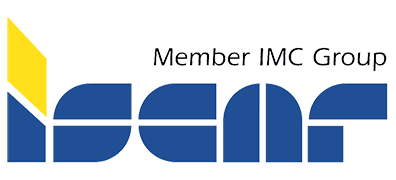
Iscar Metals is introducing new small-sized cost saving inserts. In many turning applications, machinists tend to use larger inserts than are actually required for the machining parameters being applied. To fill the need, Iscar is introducing a wide range of ISOTURN small sized inserts, which provide an economical advantage regarding cost per cutting edge. The new inserts are available in a wide range of geometries, corner radii, new chipformers and the most advanced SUMO TEC carbide grades. The available geometries are WNMG 33.., WNMX 34.., CNMG 33.., CNMX 34.., SNMG 33.., DNMG 33.., TNMG 33.. and TNMX 34... These inserts are generally thicker than the standard inserts of the same sizes, thus providing higher durability and they can run at feed rates similar to the larger inserts.
The 3/8" inscribed circle ECO inserts can cover about 75 percent of turning applications, as the most popular D.O.C. range is between .03" to .120" Therefore, small sized inserts can handle this machining range with reduced costs, when compared to the ½" inscribed circle larger inserts being widely used in such applications. When .120" to .200" D.O.C. is required, the ½" inscribed circle insert size can be used.
Iscar is adding the small sized HELITURN LD inserts in WNMX, CNMX and TNMX geometries. These inserts, like their larger counterparts, have high positive radial helical cutting edges and positive rake angles, which is a combination that substantially reduces cutting forces and thus enables machining at higher cutting loads.
As the ISO turning applications are used extensively in the metal cutting industry, the new inserts and tools can be used to focus on the applications where large inserts are unnecessarily used instead of using smaller, more economical inserts which can do the same job successfully.
Contact Details
Related Glossary Terms
- feed
feed
Rate of change of position of the tool as a whole, relative to the workpiece while cutting.
- inscribed circle ( IC)
inscribed circle ( IC)
Imaginary circle that touches all sides of an insert. Used to establish size. Measurements are in fractions of an inch and describe the diameter of the circle.
- rake
rake
Angle of inclination between the face of the cutting tool and the workpiece. If the face of the tool lies in a plane through the axis of the workpiece, the tool is said to have a neutral, or zero, rake. If the inclination of the tool face makes the cutting edge more acute than when the rake angle is zero, the rake is positive. If the inclination of the tool face makes the cutting edge less acute or more blunt than when the rake angle is zero, the rake is negative.
- turning
turning
Workpiece is held in a chuck, mounted on a face plate or secured between centers and rotated while a cutting tool, normally a single-point tool, is fed into it along its periphery or across its end or face. Takes the form of straight turning (cutting along the periphery of the workpiece); taper turning (creating a taper); step turning (turning different-size diameters on the same work); chamfering (beveling an edge or shoulder); facing (cutting on an end); turning threads (usually external but can be internal); roughing (high-volume metal removal); and finishing (final light cuts). Performed on lathes, turning centers, chucking machines, automatic screw machines and similar machines.








